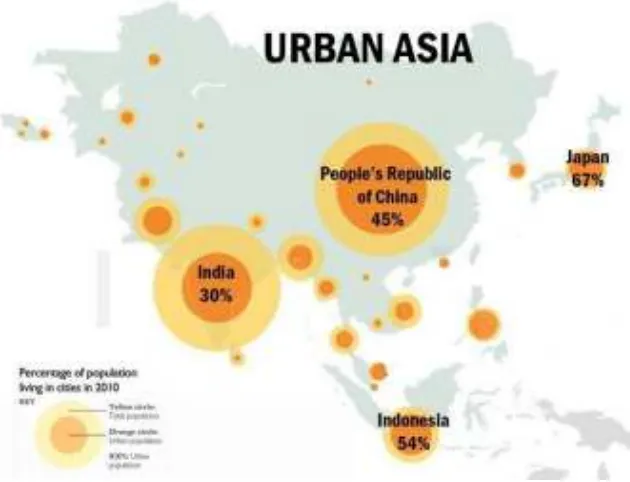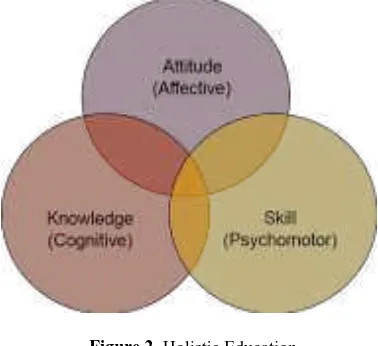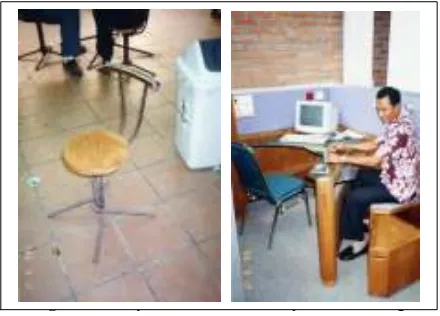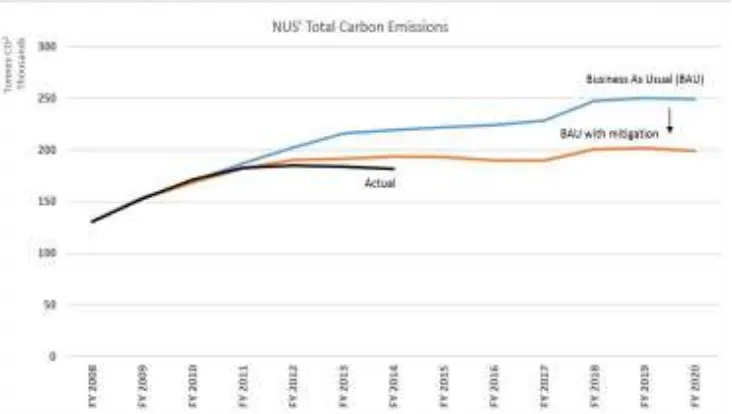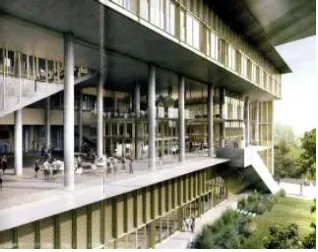TOWARDS LIVABLE FUTURE: CARING FOR OUR COMMON HOME
Johannes WIDODO1
1
Associate Professor, National University of Singapore, SINGAPORE, [email protected]
ABSTRACT
The keynote address will focus on the evaluation of the common problems and threats to our earth, humanity, and city caused by our unethical behaviours towards nature and other human beings. The discussion will focus on the necessary steps towards a more sustainable environment of and life on personal and communal levels. An example of practice towards a more liveable future at the National University of Singapore will be presented to illustrate the possibility of implementing the commitments for improving the sustainability practice in university campus and education process.
1.
INTRODUCTION
Figure 1. In 2010 the proportion of urban population against rural population in Indonesia reached 54% in proportion,
number two in Asia after Japan, and above China and India. (Source: Developing Asia Journal)
The year 2050 has been declared as a symbolic year when the world will reach its ―break even‖ or turning point. United Nations has predicted that the world population will reach 10 billion people and India will overtake China as the most populous country in the world, 3 million more that the present number. The World Wildlife Fund in 2002 predicted that the earth will not have sufficient resources to sustain human life by this year. The United Nation has also predicted that two out of nine people in the world will be 60 years old or older by then, and the world life expectancy is to exceed 76 years. In 2008, G7 has agreed to achieve 50% global greenhouse gas emission by 2050. And by this year, Asia‘s cities are predicted to be home to 60% of the world‘s urban population.
example of ―pseudo-sustainability‖ - because the carbon debt to produce, to transport, and to construct those materials are way surpassing the carbon saving.
Dependency to air conditioning, even if the ambient temperature is set to 25 degrees centigrade, is one example of unsustainable life style. Our consumption pattern (foods that we like, clothes that we wear, gadgets that we want, tools that we use, etc.) has been depleting our resources. The throwaway culture has created pollution and wastage. The quality of human life has been declining, biodiversity is losing, natural environment is damaged, because of social-economic polarity, economic greed, and the loss of social justice.
The only way to stop this disaster and harmful attitude towards human and nature in order save this living social and physical environment for future generation is by changing our unsustainable life style and unethical behavior. It should start from self-reflection and re-evaluation on our current practices, repenting from unsustainable and arrogant life-style, and abandon unsustainable practices. With humility we shall re-invent good traditions and wisdoms, promote dialogue and transparency in planning and decision making, promote ecological education and spirituality, and develop contextual, appropriate, truthful, and just solutions and resolutions for the current problems, towards a more livable future. It is everyone responsibility to take care our common home.
2.
HOLISTIC EDUCATION
The first fundamental step toward that objective is by inculcating empathy through holistic education, not only to our children, but also to every member of the society. The term ―empathy‖ is originated from ancient Greek ἐ (en) (in, at), andπάθος (pathos): passion, suffering, therefore ἐ πάθεια (empatheia) means physical affection, passion, or partiality. In German it is called ―Einfühlung” or ―feeling into‖. Inculcating empathy means to teach our children, students, and everyone on how to stand on the others‘ shoe, to feel how the others feel, to see from the others‘ perspectives, and to understand the others sufferings and dreams.
The reality of our education today in many schools is the disparity between the knowledge taught in the school with the reality of living architecture out there, the gap between theory and practice, and the failure to induce ethics into the students. Project based education is only able to teach knowledge and skill, but not values. Therefore problem based pedagogy should be made the norm in reforming our teaching from lower to higher education. Holistic education is the foundation for empowerment, to equip the students not only with cognitive capacity (knowledge) and psychomotor ability (skill), but most importantly by affective ability (right attitudes, moods, and feelings). This can be achieved through strategic curriculum, correct pedagogy, and competent teachers.
Figure 2. Holistic Education
Source: author
3.
EXAMPLE: ARCHITECTURE THAT TEACHES VALUES
The first example of an interesting architecture that is able to educate its users on ethical and sustainable living is the main building of Widya Mandala University in Surabaya, Indonesia, designed by architect Ir Rusli in 1996.
The overall building style is inspired by brickworks of East Javanese Hindu temples, and the roof of Puh Sarang Catholic church designed by Ir Henri Maclaine Pont in 1930s, in an attempt to contextualize the architecture into local architectural culture and religion. The main structures are exposed steel, with the implementation of direct electrical current technology, adopted from shipbuilding industry – one of the main industry in Surabaya – to prevent rusting process. Both structural system and the direct current technology were implemented to save cost (speed of construction, light-weight structure, no cost for painting and maintenance). Another important feature is the walls, made by high quality hollow-bricks, put together to create openings for ventilation and natural lighting.
Figure 3. Widya Mandala University main building
Source: author
The furniture were made using recycled woods and left-over materials from the construction site. The specially and cleverly designed staff‘s table with transparent glass tabletop is a symbolical gesture of ―nothing hidden under the table‖ (transparence, honesty, no-corruption), organized in very efficient but yet comfortable open-plan office layout.
Figure 4. Widya Mandala University main building
Source: author
4.
EXAMPLE: UNIVERSITY THAT COMMITS
The second example is the National University of Singapore commitment towards a greener and more livable campus, and its contribution to the global attempt to curb carbon emissions. In March 2006, NUS President announced that the university will reduce its carbon emission by 23% below business-as-usual by
2020. This includes direct emissions from sources owned or controlled by NUS (e.g. departmental vehicular fleet), indirect emissions from the generation of purchased electricity consumed by the university, and indirect emissions that are a consequence of the activities of the university but occur from sources not owned or controlled by NUS (e.g. private transportation, public transport, shuttle bus fleet, staff air travel, etc.). The university‘s Environmental Policy was launched in 2002, and the Energy Policy was released in 2015, both are aimed to achieve the carbon emissions target.
Figure 5. NUS‘ Total Carbon Emissions that shows the success of the university attempts
Source: http://www.nus.edu.sg/oes/Commitment.html
The university‘s sustainability and livability agenda is focused on the following areas: Energy, Water, Waste Management, Mobility, Natural Spaces, Built Environment, Education, Research and Partnership. So far five Task Forces have been formed: Energy Task Force, Water Management Task Force, Waste Minimization and Recycling Task Force, Built Environment Task Force, and Green Spaces Task Forces.
Energy consumption in NUS makes up about 67% of the carbon emissions inventory. The energy reduction is achieved through consolidation of chilled water plants for building air-conditioning, installation of building metering to measure real-time electricity, water, and chilled-water usage, and replacing lighting in common areas with LED and sensors. The usage of water is about 2.2 million cubic meter annually, which has remained relatively steady in between 2012-2014 in spite of campus growth. The water consumption is reduced by reducing the number of air-conditioning cooling towers, by the use of water-efficiency labelled fittings or thimbles in tap fittings, by replacing full-flush cisterns with dual-flush low capacity types, and by using collected rainwater for plants irrigation. On Waste Management front, various recycling attempts have been carried out, such as paper, metal, plastics, e-waste, ink & toner cartridges, light bulbs, glass, clothes, name card boxes, pens, etc. Canteen waste like cooking oil is recycled into bio-diesel, and organic waste into water.
Figure 6. NUS SDE4 Net-Zero Energy Building (under construction)
Source: School of Design and Environment, NUS (2016)
Equally important step is in Education itself, by offering sustainability programs (e.g. Bachelor of Environmental Engineering, Master of Science in Building Performance and Sustainability, Master of Science in Environmental Management, Master of Science in Integrated Sustainable Design, etc.), offering sustainability modules in various study programs, and conducting campus-wide sustainability campaign and outreach to raise awareness, facilitate action, and expand the culture of sustainability among students and staffs.
Latest information technology, like big-data, has been initiated under ―Virtual NUS‖ project to transform the main campus with its connected ecosystem of 50,000 students and staffs into a digitally pitched living laboratory allowing for exploration of design, development and testing of innovative applications and solutions. ―Skyways‖ is being tested to provide efficient, seamless delivery of small parcels to students and faculties via drones across campus. These efforts combine research and real life solutions, in a coordinated attempt to make campus a more livable and sustainable environment, and to prepare for a more livable and sustainable nation.
5.
EPILOGUE
These examples have shown that commitment to make a sustainable university is not just an unrealistic dream, but easily achievable through: holistic education stressing on values and ethics, alignment of research and teaching by relevant curriculum and problem based learning, collaboration and alliances with various stake holders, in sustainable and livable campus as an ideal place to produce environmentally responsible academia. Sustainable university is a breeding ground for responsible and capable individuals who will become agent for change in making the world a better place for living, a more sustainable place to raise the future generations, and a livable home for everyone.
REFERENCES
1) http://www.nus.edu.sg/oes/Commitment.html (accessed on 29/11/2016)
